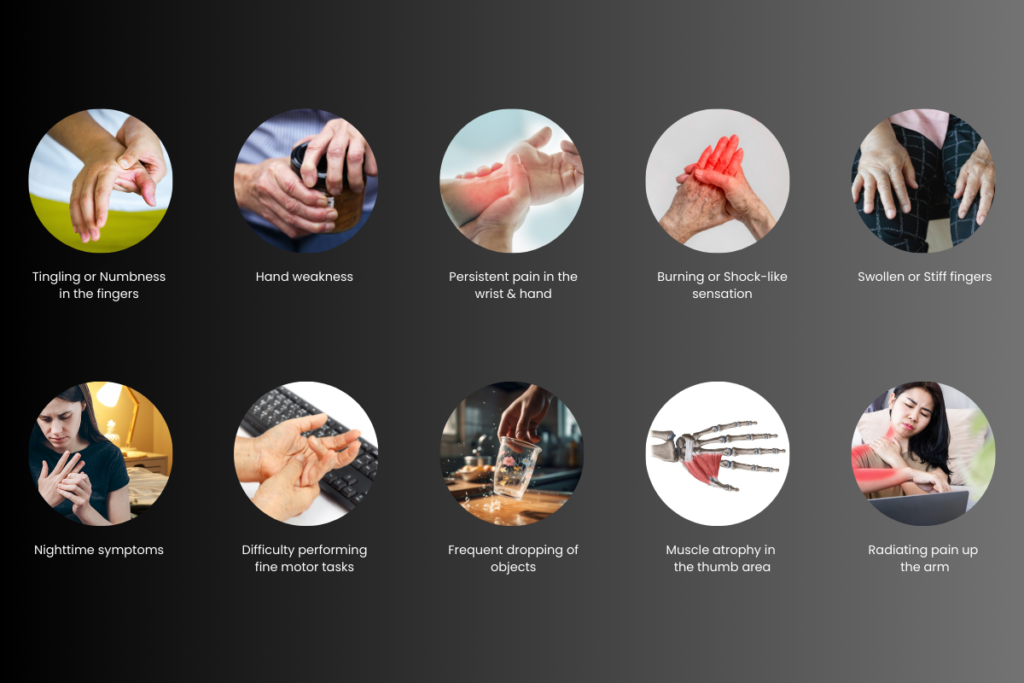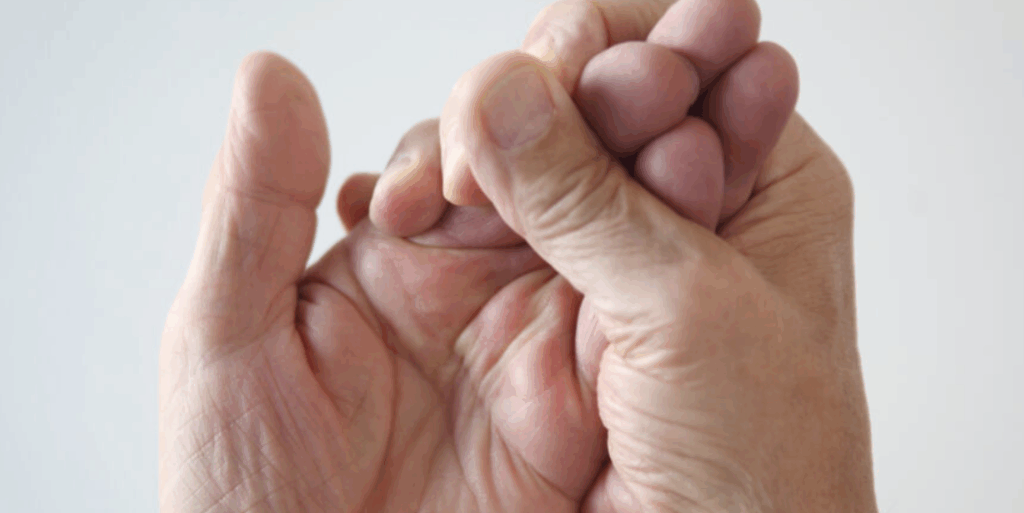You wake up shaking your hands, trying to get the feeling back. Again.
That tingling sensation shoots through your fingers as you flex them desperately, wondering if you slept on your arm wrong. But deep down, you know this has been happening too often lately. Night after night, the numbness pulls you from sleep, leaving you frustrated and increasingly worried.
Here’s what many people don’t realize until it’s too late: Wait too long, and that numbness becomes permanent nerve damage that surgery can’t fully fix.
What’s Really Happening Inside Your Wrist
Carpal tunnel syndrome isn’t just a buzzword thrown around office workers. It’s a progressive condition where the median nerve—which runs from your forearm through a narrow passageway in your wrist called the carpal tunnel—becomes compressed.
Think of it like a garden hose. When you step on a hose, water flow gets restricted. Similarly, when tissues around the carpal tunnel swell, your median nerve gets squeezed, disrupting the signals traveling between your brain and your hand.
The result? Numbness, tingling, pain, and eventually, weakness in your thumb, index, middle, and ring fingers.
The Modern Lifestyle Connection: Why Carpal Tunnel Is Skyrocketing
Our hands weren’t designed for the way we use them today. Consider your daily routine:

The Typing Trap
Spending 6-8 hours typing with your wrists bent at awkward angles creates constant pressure on the median nerve. That slight upward bend while typing? It’s gradually compressing the nerve with every keystroke. Multiply that by thousands of keystrokes daily, and you’re creating the perfect storm for carpal tunnel development.
The Smartphone Syndrome
Scrolling through your phone might seem harmless, but the repetitive thumb movements and the way you bend your wrist to hold the device puts sustained pressure on the carpal tunnel. Studies show that the average person touches their phone over 2,600 times per day. That’s 2,600 opportunities for repetitive strain.
Manual Work Wear and Tear
If your job involves assembly line work, carpentry, painting, or using vibrating tools, you’re exposing your wrists to repeated forceful movements. Unlike typing, manual work often combines pressure with vibration—a particularly damaging combination for the delicate structures in your wrist.
Other Contributing Factors
Pregnancy, diabetes, thyroid disorders, and rheumatoid arthritis can increase fluid retention and inflammation, making the carpal tunnel even more crowded. Even your genetics play a role—some people are simply born with a smaller carpal tunnel.
The Warning Signs You Shouldn’t Ignore
Carpal tunnel syndrome develops gradually, which is precisely why it’s so dangerous. Here’s how it typically progresses:

Stage 1: Intermittent Symptoms
- Occasional tingling or numbness, especially at night
- Symptoms that disappear when you shake your hands
- Mild discomfort that doesn’t interfere with daily activities
Stage 2: Persistent Discomfort
- Numbness that lasts longer and occurs during the day
- Pain that radiates up your forearm
- Difficulty with fine motor tasks like buttoning shirts or picking up small objects
- Symptoms during activities like driving or holding a phone
Stage 3: Constant Pain and Weakness
- Numbness that doesn’t go away
- Visible muscle wasting at the base of your thumb
- Dropping objects frequently
- Difficulty distinguishing between hot and cold with affected fingers
The Critical Window
Here’s what makes carpal tunnel syndrome particularly insidious: By the time you reach Stage 3, you may have irreversible nerve damage. Nerves can only tolerate so much compression before they lose their ability to regenerate completely.
How Physiotherapy Can Save Your Hands
The good news? If caught early enough, physiotherapy can effectively treat carpal tunnel syndrome and help you avoid surgery altogether. Here’s how a comprehensive physiotherapy approach works:
Initial Assessment and Diagnosis
A qualified physiotherapist will conduct specific tests like Phalen’s test (holding your wrists in flexion) and Tinel’s sign (tapping over the median nerve) to confirm carpal tunnel syndrome and assess its severity. They’ll also evaluate your posture, work setup, and movement patterns to identify contributing factors.
Nerve Gliding Exercises

These specialized exercises help the median nerve move more freely through the carpal tunnel. Think of it as creating more space and reducing friction. Your physiotherapist will teach you specific sequences that gently mobilize the nerve, reducing adhesions and improving blood flow to the area.
Wrist and Hand Strengthening
Weak muscles can’t properly support your wrist joint, placing more stress on the median nerve. Targeted strengthening exercises build up the muscles in your forearm, wrist, and hand, creating a more stable structure that protects the nerve during daily activities.
Manual Therapy Techniques
Hands-on treatment including soft tissue mobilization, myofascial release, and joint mobilization can reduce inflammation, improve circulation, and decrease pressure on the median nerve. These techniques also address compensatory patterns that develop in your shoulder, neck, and upper back.
Posture and Ergonomic Training
Your physiotherapist will analyze your workspace and daily habits, then provide specific recommendations for:
- Proper keyboard and mouse positioning
- Optimal chair height and desk setup
- Correct phone holding techniques
- Modifications to your work processes that reduce wrist strain
Splinting Guidance
Night splints keep your wrist in a neutral position while you sleep, preventing the extreme flexion that causes nighttime symptoms. Your physiotherapist will ensure proper fit and teach you when and how to wear splints for maximum benefit.
Modalities for Pain and Inflammation
Therapeutic ultrasound, cold laser therapy, and electrical stimulation can reduce inflammation and pain while promoting tissue healing. These adjunct treatments complement your exercise program and manual therapy.
Real Results: What You Can Expect
When started early, physiotherapy shows impressive results:
- 60-70% of patients with mild to moderate carpal tunnel syndrome experience significant improvement with conservative treatment
- Symptoms often begin improving within 2-4 weeks of consistent physiotherapy
- Many patients who commit to their treatment plan avoid surgery entirely
- Even those who eventually need surgery recover faster and more completely with pre-operative physiotherapy
Compare this to the surgical option, which requires weeks of recovery, carries risks like infection and nerve damage, and doesn’t always restore full function—especially if performed after significant nerve damage has occurred.
Why Waiting Is Your Worst Option
Every day you delay treatment, the compression continues. The median nerve loses more of its protective myelin sheath. The muscles in your hand continue to weaken and atrophy. The window for conservative treatment narrows.
Surgery might decompress the nerve, but it can’t restore dead nerve fibers. It can’t rebuild atrophied muscles. And it can’t give back the months or years of function you’ve lost.
Taking Action: Your Next Steps
If you’re experiencing any symptoms of carpal tunnel syndrome, here’s what to do:
This Week
- Schedule an appointment with a physiotherapist who specializes in hand and upper extremity conditions
- Document your symptoms: when they occur, what makes them better or worse, and how they’re affecting your daily life
- Take photos of your workspace from multiple angles
Starting Today
- Take breaks every 30 minutes from repetitive hand activities
- Keep your wrists in a neutral position as much as possible
- Avoid sleeping with your wrists bent
- Stay hydrated and reduce sodium intake to minimize fluid retention
During Your First Appointment
Be prepared to discuss your work duties, hobbies, medical history, and symptom timeline. Your physiotherapist will create a personalized treatment plan based on your specific situation and goals.
The Bottom Line
That nighttime numbness isn’t just an inconvenience—it’s your body’s urgent warning signal. Carpal tunnel syndrome is progressive, but it’s also highly treatable when caught early. Physiotherapy offers a proven, non-invasive path to recovery that addresses the root causes, not just the symptoms.
Your hands are essential to almost everything you do. Don’t gamble with their future. The numbness you’re experiencing today could become permanent weakness tomorrow.
The question isn’t whether you should seek treatment. It’s whether you’ll act while conservative options can still work.





